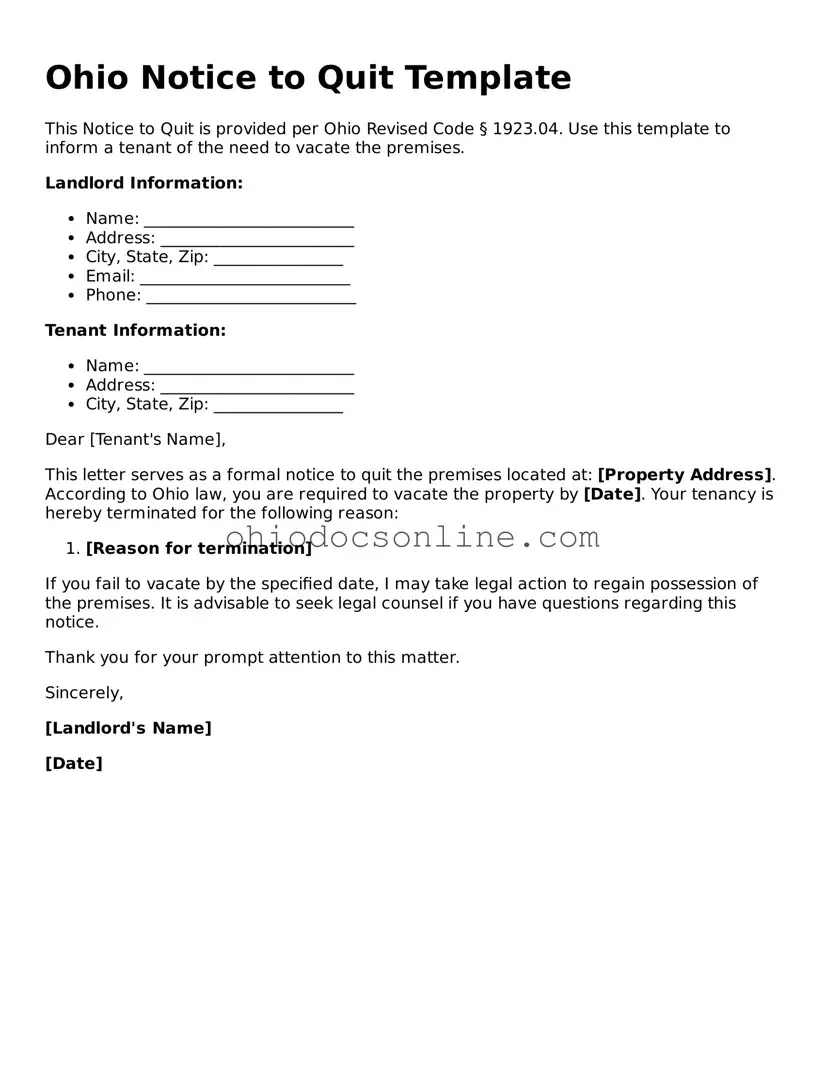Printable Notice to Quit Template for Ohio
The Ohio Notice to Quit form is a legal document used by landlords to inform tenants that they must vacate the rental property. This notice typically serves as a formal request to end the tenancy, often due to lease violations or non-payment of rent. Understanding this form is crucial for both landlords and tenants to ensure compliance with Ohio's rental laws.
Open Editor
